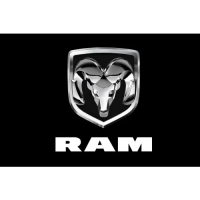OIM‐600056 Rev.0 13
set the brake(s).Once a travel limit has been reached, the
operator cannot resume operation until the reset button is
pressed.The operator must proceed to run the winch in the
directionoppositefromthetravellimit.The winchdrumneedsto
turnatle ast2
fullrevolutionsinthe opposite directionbeforethe
limitswitchwillmoveoffthecamandreset.Giventhe variability
of the winding of the wire rope onto the winch drum, the
operatorneedstobeawarethattherepeatabilityofthesetpoint
can be dramatically affected. Travel speed
and load at time of
reachingthetravellimitmayaffectstoppingdistances.
Therotarylimitswitchisnotintendedtotaketheplaceof an
anti‐twoblockswitchduetothevariabilityofcablewrapping
ontothewinchdrum.Elasticityinthecableaswellas
miss—
wrapped and loosely wound cable can result in poor
repeatability.
Holding down the reset button can permit the operator to
continue to run the winch past the limit switch cam.This
should be avoided and will require that the switch be
recalibratedbeforecontinuingoperations.
4.8. AutomaticLevelwind
The levelwind is used to aid in the proper spooling of the wire
rope onto the drum.The wire rope is guided onto the winch
drumviarollersonthelevelwindcarriage.Thelevelwindcarriage
isdrivenwitha lead screw driven by an airmotor.Thedirection
of the air
motor is controlled by limit switches mounted on the
carriage and a manual valve mounted to the air motor.As the
wire rope spools onto the drum, the sensing arm actuates the
limit switches and advances the levelwind carriage accordingly.
At any point that the levelwind carriage needs to be
manually
adjusted,the operator canuse the providedmanualvalve to run
thecarriageaccordingly.
5. MaintenanceProcedures
Never perform maintenance on the equipment with tension
onthewirerope.
Prior to performing any maintenance, tag the equipment as
“OutofService”
Only allow Ram Winch and Hoist trained technicians to
performmaintenanceonthisequipment.
Shut off the air supply and remove pressure
from air lines
beforeperforminganymaintenanceprocedures.
Only use genuine Ram Winch and Hoist parts.Use of other
parts may result in a safetyhazard, decreased performance,
or increased maintenance cycles and may invalidate all
warranties.
5.1. Introduction
Maintenance of the Winch consists of determining the defective
partandremovingorreplacingthatcomponentaswellasroutine
inspection, cleaning, lubrication, and making necessary
adjustments.Maintenance procedures are technical and should
be performed by trained and experienced technicians to
accomplish the tasks correctly and safely.In some cases, repair
and testing may require specialized equipmentor tools that may
notberoutinelyavailableatmostfieldinstallations.
Proper use, cleaning, inspecting, and routine maintenance will
increasetheusefullifecycleofthisequipment.Duringassembly,
use of anti‐seize compound and/or thread lubricant on threaded
fasteners prevents corrosion and
allows for easy disassembly of
components in the future.For more information on properly
torqueing of fasteners on this equipment, refer to PS‐100013 –
Ram’sFastenerInstallationProcedures(Availableuponrequest).
It is imperative that all personnel involved with the any
maintenance and inspection procedures for this equipment be
familiar
withtheequipmentandhasthoroughlyreadthismanual.
In addition, the personnel should be physically capable of
conducting the procedures and should have skills with common
mechanics hand tools, any special tools recommended by Ram
Winch and Hoist, as well as standard safety procedures
established by industry and/or corporate
protocol.Refer to the
MaintenanceIntervalChart(seepage 18)forrecommendedtime
intervals for service as it relates to Normal, Heavy, and Severe
Applications.Also,aDailyCheckListisprovided(seepage19)and
aTroubleshootingChartisprovided(seepage20).
5.2. AirInletFilter
It is recommended that an air line filter be installed as close as
possible to the motor air inlet, but prior to a lubricator and a
regulator, to prevent dirt from entering the motor and control
valve(seeFigure4).Thefiltershouldprovide 20micronfiltration
and include a moisture
trap.Clean the filter element regularly
and drain any trapped moisture at the start of each shift.
Moisture and debris introduced into the motor through the air
system is the leading cause of excessive motor wear and
decreasedtimebetweenserviceoverhauls.
The frequency of filter replacement and/or cleaning will
be
dictatedbythecleanlinessoftheairplumbingsystemasawhole,
thefrequencyofuse,environmentalfactors,andvariablesunique
tothepneumaticsystemthatthisequipmentisoperatingin.
Turn off the air pressure to the supply filter before servicing the
filter (Insure all pressure is re lieved from
the line).Inspect for
leaksbeforereturningtoservice.
5.3. AirLinePressureRegulator
Install the regulator after the air filter but before the lubricator
(see Figure 4).Do not exceed the rated operating pressure as
giveninSection2.1.

